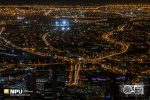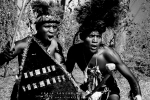











Large Format Photography in simple terms means large film size, and are cameras that use sheet film sized 4×5″ or larger with the most common film sizes being 4×5″ and 8×10″. Standard large format film sizes include 5×7; 9×12″, 11×14”. The reason for such a large film size, is because in photography, the bigger the film size, the better the quality. A larger negative produces better quality prints because it requires less magnification than a smaller negative would. To create an 8×10″ print from a 35mm negative, you need to enlarge the print 8 times. If you had a 4×5″ negative, you would only have to enlarge it 2 times. If you shot an 8×10″ negative, you wouldn’t have to enlarge it at all! In addition, a larger negative offers a much greater range of tonal values and less apparent graininess due to the greater number of silver halide crystals on the image.
Quality of reproduction will almost certainly be an important priority. Many product photographers prefer working with 8×10 cameras because such large negatives and positives (transparencies/slides) allow far greater freedom in post-production techniques: retouching, stripping, making composites, etc. Industrial photographers, on the other hand, may prefer a 4×5″ format camera because a wider variety of lenses are available in this size and because it is more portable and easier to use. These lenses can be found at specialist camera dealers, particularly in the second-hand department. Nikon no longer manufactures them, and a patient search on eBay will net the catch you looking for. I favour the wide angle and portrait lenses for my style of photography.
Though view camera prices tend to increase substantially as the format size increases, there is a far greater difference in price among the brands within the same format. Precision, high-quality workmanship, and durability generally account for the differences. Lenses for 8×10″ cameras are less plentiful and more expensive than lenses for smaller formats, and the size of the film you use has an effect on cost throughout your processing and printing system. I currently use the 4×5″ system. I am busy planning an 8×10 build with a 5×7 reducing back which will allow me to work with these larger formats.
My Shen Hao HZX 45IIA at Nieuwoudtville Wildflower Reserve
text
Camera and lens manufacturers have made considerable progress in simplifying view camera operation. The shutters on most modern view camera lenses, for example, can be opened for focusing and closed with a separate lever without altering the shutter speed or aperture setting. The most common shutter system is Copal in either a size 0, 1, 3 and 3S. Compur is the other favoured option. Several devices enable you to set the shutter speed and the f/stop from behind the camera. To “correct” the upside down ground-glass image, there are reflex viewers available which eliminate the need for a focusing cloth. My Shen Hao HZX-45 II-A does not have this reflex viewer, and I use the “Dracula-under-the-cloak-system” to focus upside down and to compose my shot. There are no electronics on this camera whatsoever, so I make use of an exposure meter to take spot readings to meter for the correct exposure.
The principal features that set view cameras apart from all nonadjustable cameras are the cameras movements. In a nonadjustable camera, the relationship of the lens to the film plane is fixed and permanent; other than switching from one lens focal length to another, or changing your camera position, fixed cameras offer you little actual control over image manipulation.
A view camera, on the other hand, allows you to change virtually every aspect of the lens/film relationship, including lens-to-film distance, vertical and horizontal displacement, and angular relationship. Because of this flexibility, you have almost limitless control over the ground glass image. You can enhance, change or exaggerate image size, shape, sharpness, depth of field, and apparent perspective. In addition, you can shift the placement of the main subject within the borders of the ground glass without having to move the camera, allowing you to fine-tune composition even after the camera position has been established. This is done by either rise and fall, tilt-shift or swing operations of either the front and back of the camera.
text
text
This is a slow and methodical process. If you think you can arrive at a location, pop on a lens and take a shot as you would with a 35mm film or digital camera, you are horribly wrong. There are quite a few ticks in the boxes that need to be completed before the image is captured. This is a good thing, as you are required think about your composition, slow down and get it right first time every time in camera! The results are nothing less than phenomenal, as is the quality of the final print, especially when it comes to size! In the same way as the results can be so rewarding, so too can the mistakes be just as amplified when you get it wrong”!
A wonderful thing about shooting 4×5 format is that there are film roll back adapters which allow you to load 120 film and to shoot fantastic panoramas in the following formats: 6×7; 6×9, 6×12, 6×14 and 6×17 in a singe shot no stitching! The flexibility of this means that you only get Kodak Portra 800 in 120 and not in large format film sheets. There are plenty of other films stocks not available in sheet film that are available in roll film. If this is your favourite film, or you are needing a faster film like Ilford Delta 3200, this can be done effortlessly by using the film roll back and enjoy medium format on a large format system – the best of both worlds and no need for two separate systems.
All my images are available for purchase as prints. Digital images can be used under license agreement. Film images are not clinical and as perfect as digital, imperfections can and should be expected from this medium. Should you wish to purchase or license my images, please click here for more information, so I can assist you with your needs.
There are no upcoming events.
This is a demo store for testing purposes — no orders shall be fulfilled. Dismiss